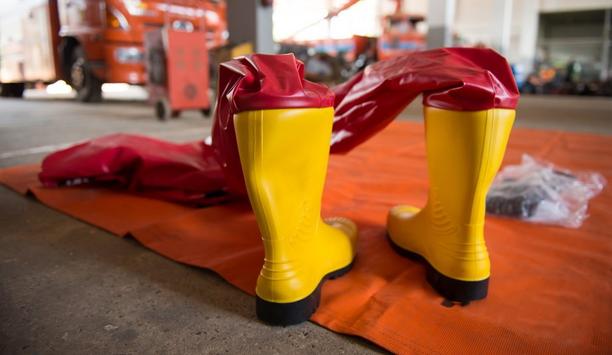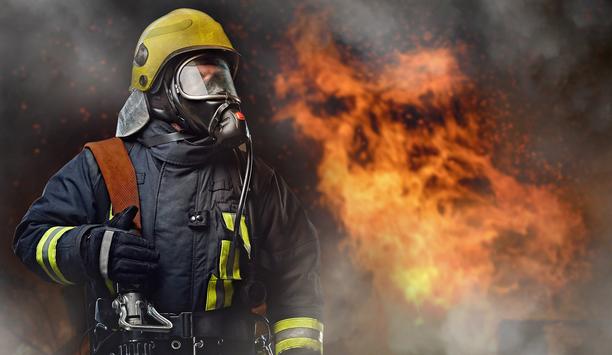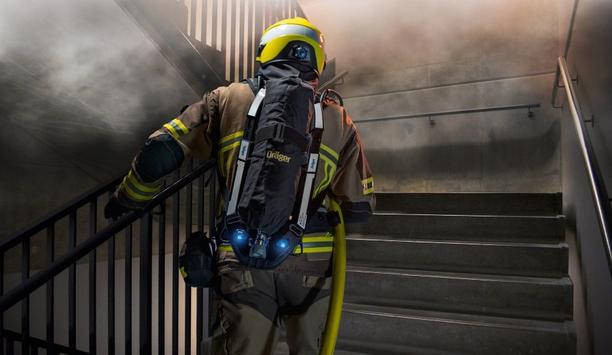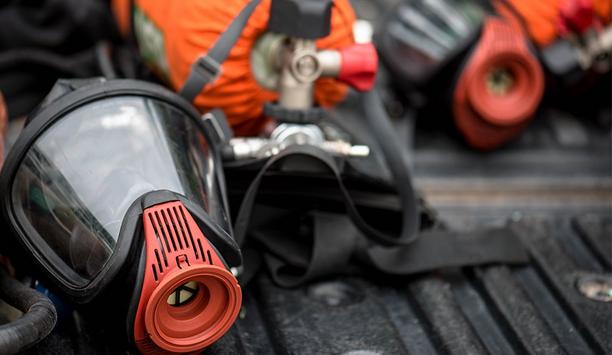With changes to pool operations as a result of the COVID-19 pandemic, there are also recommended changes to how lifeguards respond to medical emergencies.
Based on current recommendations, Lifesaving Resources Inc. has outlined Standard Operating Procedures (SOPs) for swimming pools, waterparks and other aquatic venues to follow for lifeguard training.
Importance of effective lifeguard training
Lifesaving Resources believes that preparing the staff with the new COVID-19 restrictions in mind is critical for safety
As a company that has been training first responders to safely enter a situation in and around water for decades, Lifesaving Resources believes that preparing the staff with the new COVID-19 restrictions in mind is critical for safety and effectiveness.
The company’s guidelines state that if lifeguard training at a facility involves the use of manikins, each instructor and student should be provided one for their exclusive use, during the training session. All manikins and instruction materials should be decontaminated prior to every use.
Training and social distancing
The guidelines state if local regulations require distance between instructor and students, only training which allows for this can be conducted. If those regulations are not in the local jurisdiction, care should still be taken to provide distance. Contact rescues and team-based CPR training can still be conducted.
Protective measures for lifeguards
- Initial victim approach - Once the victim has been removed from the water, if the patron is not wearing a face mask, the responding lifeguard should provide one and ask for it to be worn during examination, if possible. If feasible, responding personnel should maintain a distance of six feet for initial history taking and when no medical care will be required. Screening for COVID-19 symptoms should be included in patient history.
- Making direct contact with victim - If direct contact is required when responding to an emergency, the number of lifeguards should be kept to a minimum, including only the number needed to stabilize and extricate the victim from the water and/or to provide effective care.
PPE selection for responding lifeguards
The company guidelines also state that the proper PPE to use is based on the condition of the victim
The company guidelines also state that the proper PPE to use is based on the condition of the victim. If responding to a person who has COVID-19 symptoms, or based on initial approach is determined to be a possible COVID-19 patient, additional precautions should be followed, including a simple face mask, eye protection and gloves.
If an aerosol generating procedure is anticipated, such as suctioning or providing positive-pressure-ventilation, medical providers should wear an N-95 mask, in addition to eye-protection and gloves. Care should not begin on persons suspected of being infected with COVID-19 until all proper PPE is in place.
For potential COVID-19 patients in cardiac arrest, lifeguards can consider immediate defibrillation, if they believe the benefits outweigh the risks. If possible, personal resuscitation masks and BVMs (bag-valve-mask resuscitators) should be fitted with hepa filters. A lifeguard may consider additional PPE, such as gowns, in situations where the benefits exceed the risks of donning the additional equipment.
Steps for lifeguards to protect themselves from COVID-19 infection:
- Lifeguards should remove face coverings prior to entering water. They should attempt to minimize direct face-to-face contact with patients.
- Face coverings should remain on when possible in non-aquatic emergencies.
Shore based vs. in-water rescues
- If conditions permit, a shore/deck based rescue should be performed by extending or throwing a rescue device to the victim.
- If the lifeguard does need to enter the water, use of equipment (i.e. rescue buoy) to distance the rescuer from the victim should be used.
Rescue in swimming pools
- If the lifeguard must enter the water, a rear approach is suggested to minimize unprotected exposure to the person’s face.
- Extrication from the water should be performed by personnel on the deck who are wearing appropriate PPE including face coverings.
In-water resuscitation (IWR)
- Facilities that implement in-water resuscitation should consider discontinuing this practice during the COVID-19 pandemic. The process requires mouth-to-mouth or mouth-to-mask ventilations without the proper protection recommended to protect rescuer from COVID-19.
- Filter for pocket masks are not a usable for this purpose, as reliability and effectiveness in water has not been tested for COVID-19 protection.
Current best practice rescue protocols
- Rescuers should rapidly extricate the patient to the deck and initiate ventilations with a bag-valve-mask (BVM) with in-line HEPA filter.
- When applying BVM ventilations, emphasis should be given to maintaining a two-handed mask seal throughout ventilations and compressions.
Cardiac arrest response
- It is believed that COVID-19 transmission risks are reduced by use of compression-only CPR. However, CPR with ventilations has been shown to have a benefit when compared to compression-only CPR for adults with non-hypoxic cardiac arrest.
- Due to the risk of virus transmission during intubation and ventilation, facilities may consider using compression-only CPR until needed PPE becomes available.
- Covering the victim’s face with a cloth covering or face mask may reduce risk of virus transmission during CPR.
- The number of rescue personnel should be kept to essential personnel only, to counter the risk of COVID-19 spread among emergency rescue personnel.
BVM vs. pocket mask ventilations
- BVM ventilations with a high-efficiency particulate air (HEPA) filtration in the exhalation path is recommended, when compared to a pocket mask, as the mask does not provide proper distance to the victim’s face.
- While a pocket mask with a one-way valve does provide increased protection, when compared to mouth to mouth ventilations, the proximity of the rescuer to the victim’s face does not provide adequate protection and the lack of a HEPA filter further increases risk of contracting COVID-19 virus from an infected individual.






